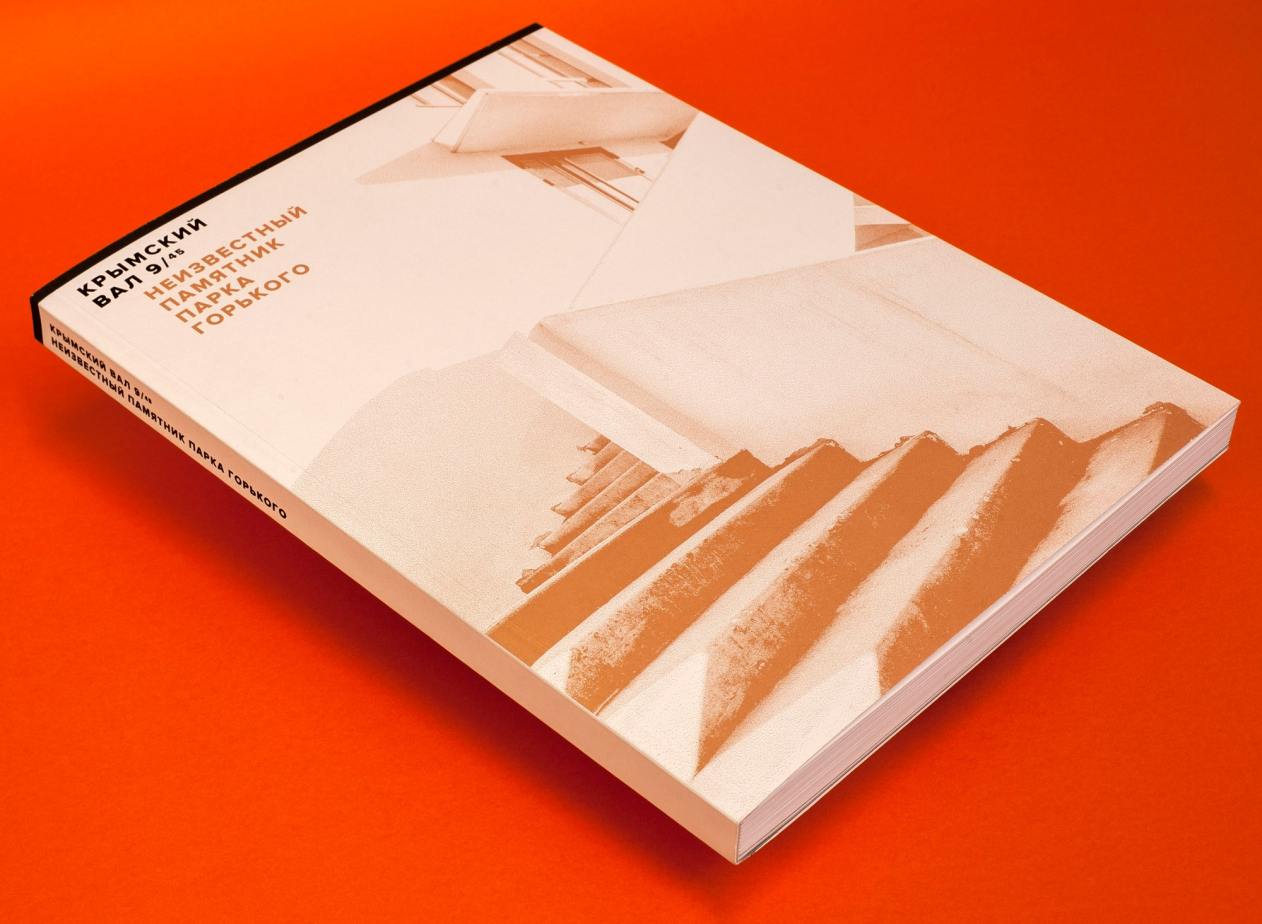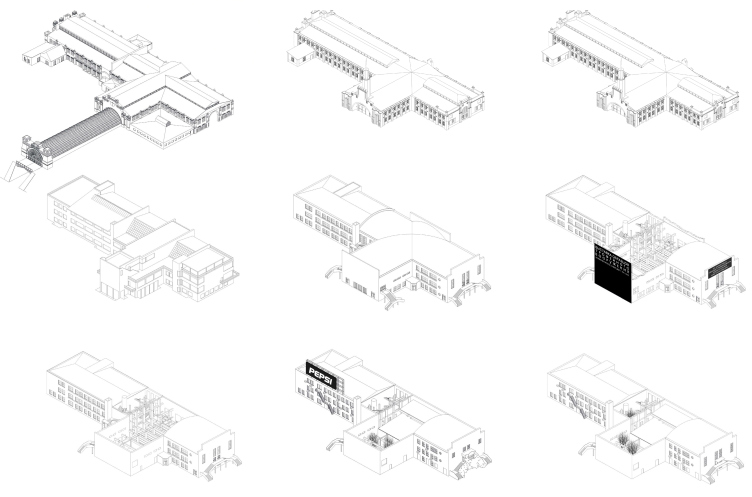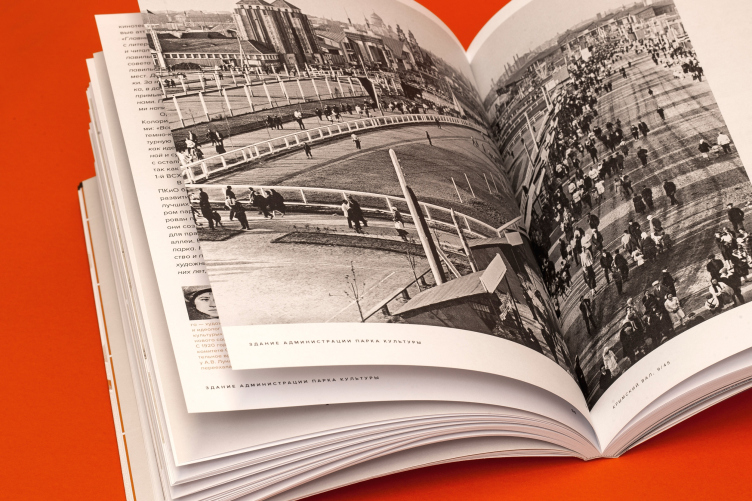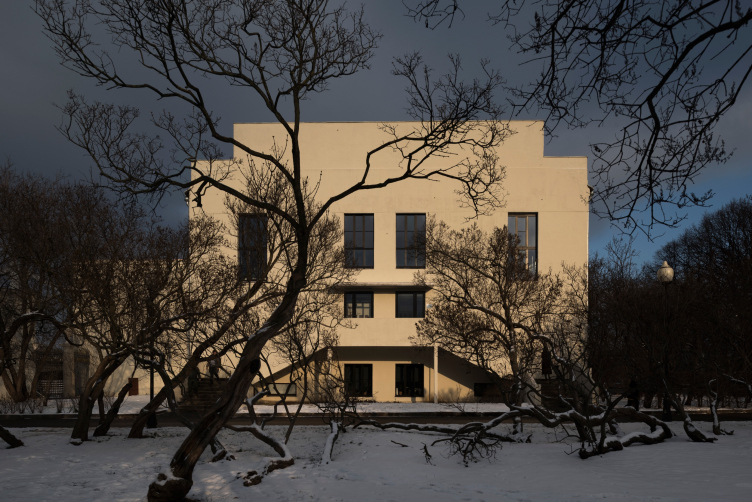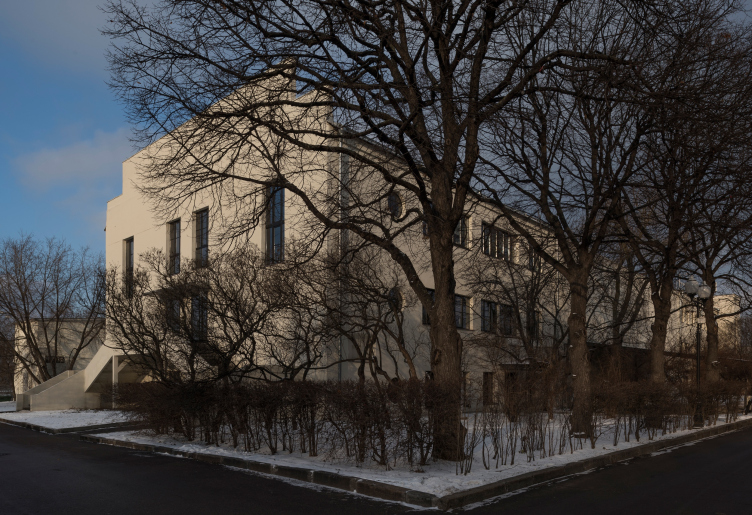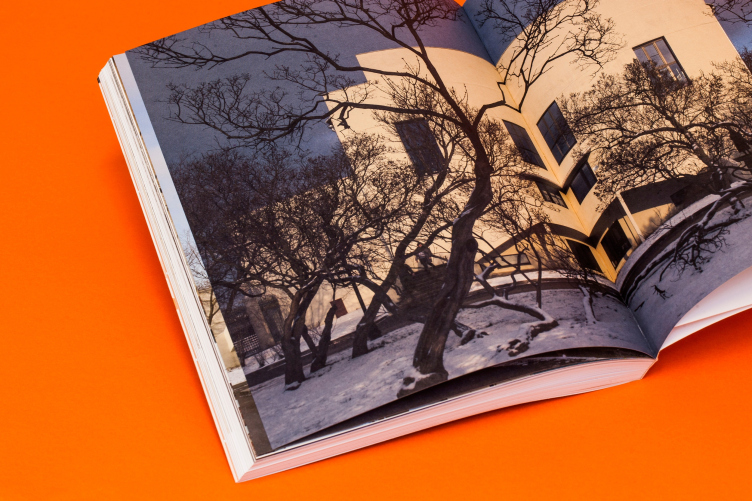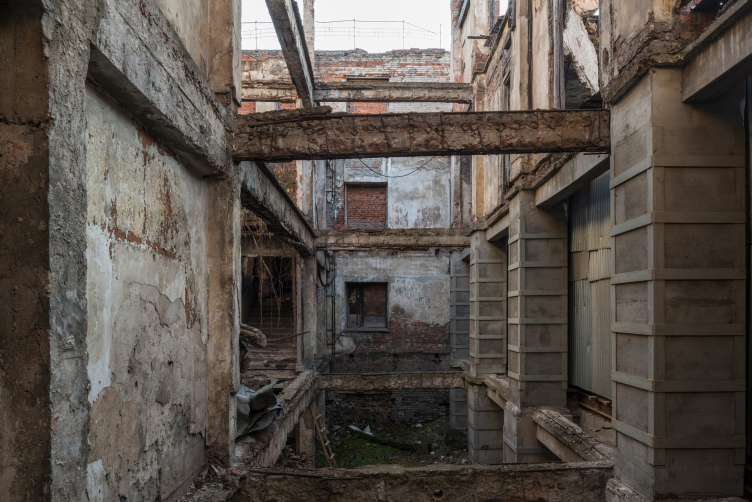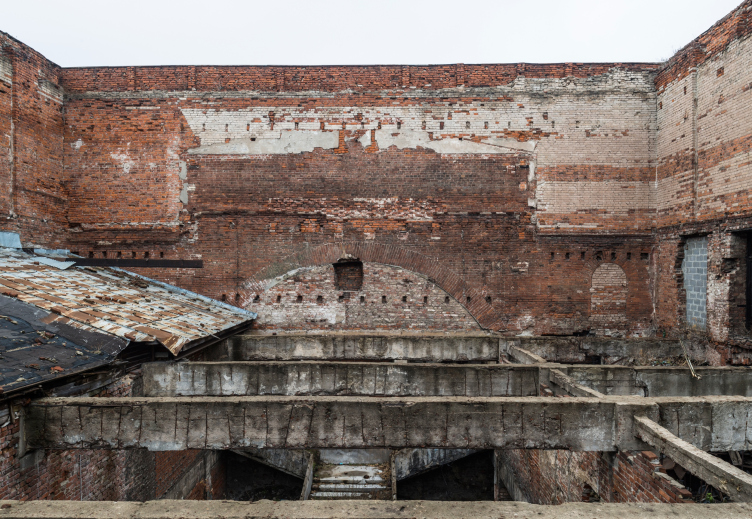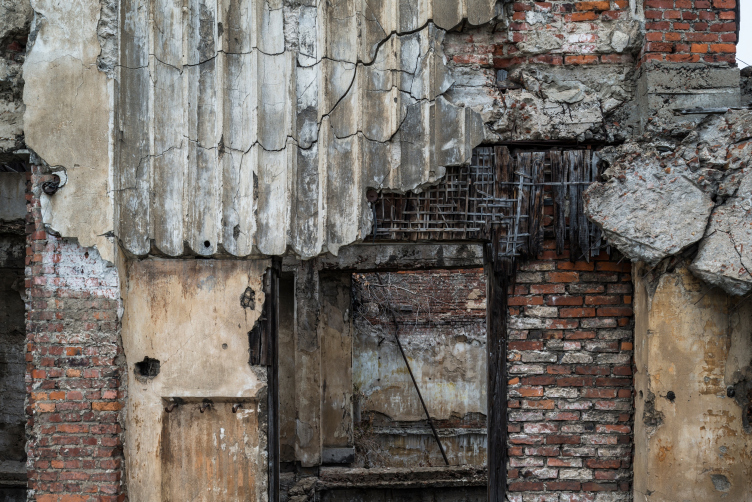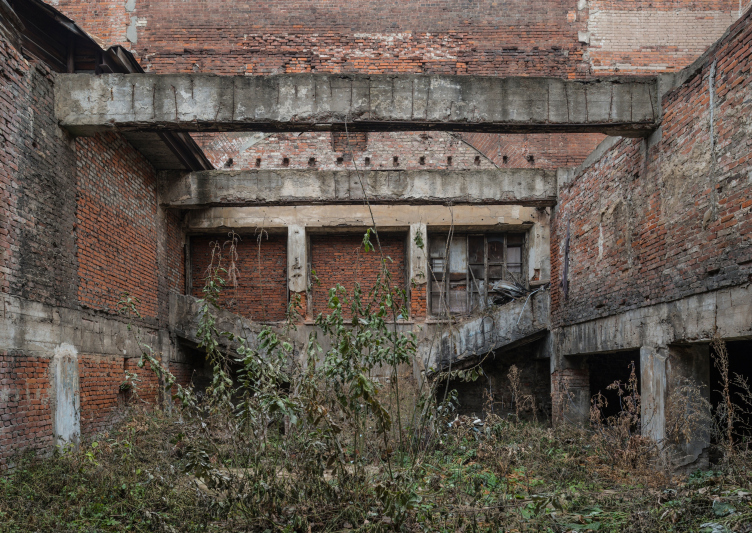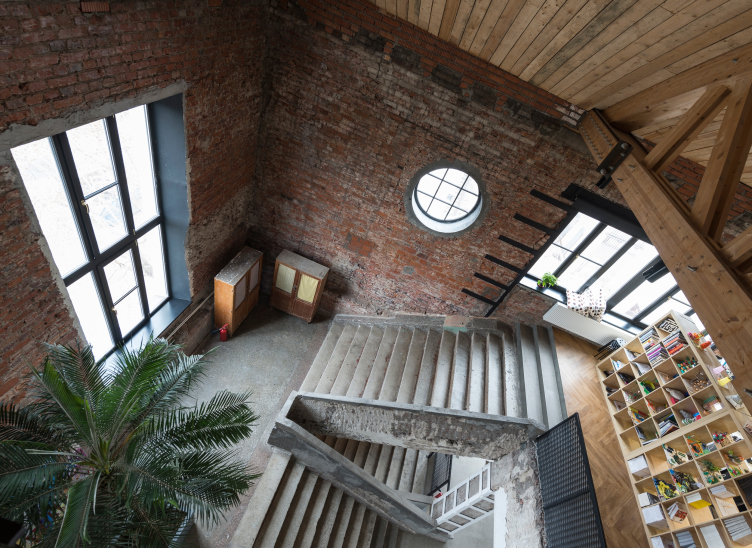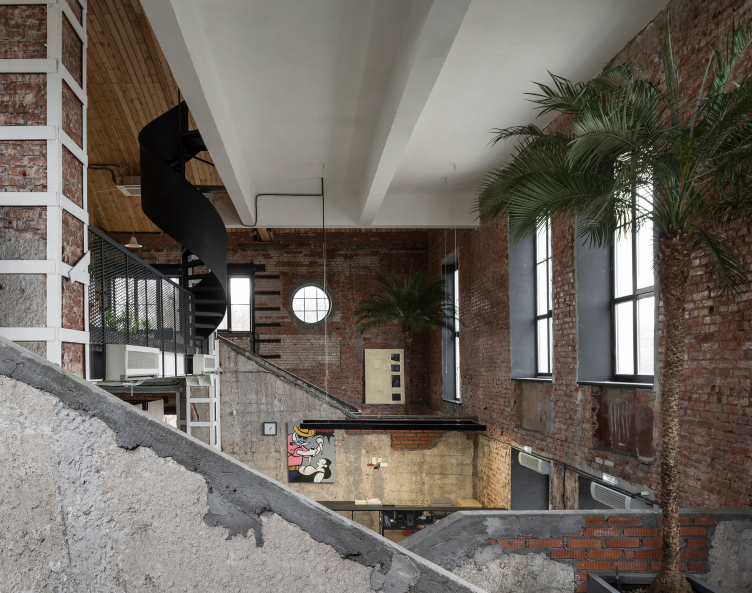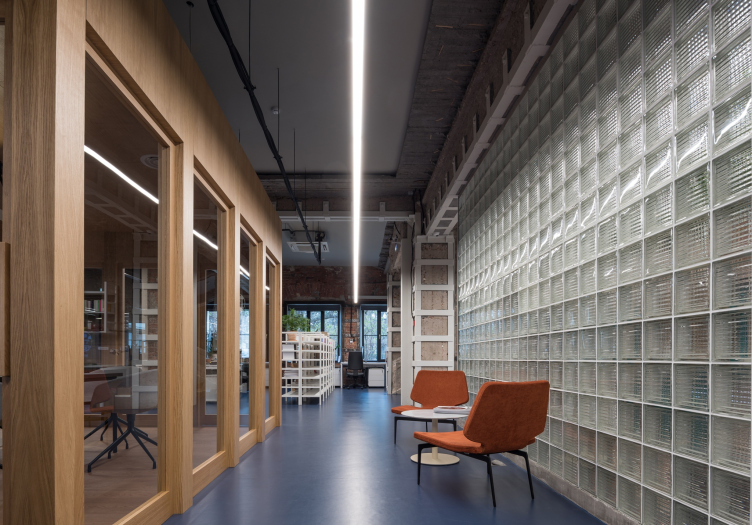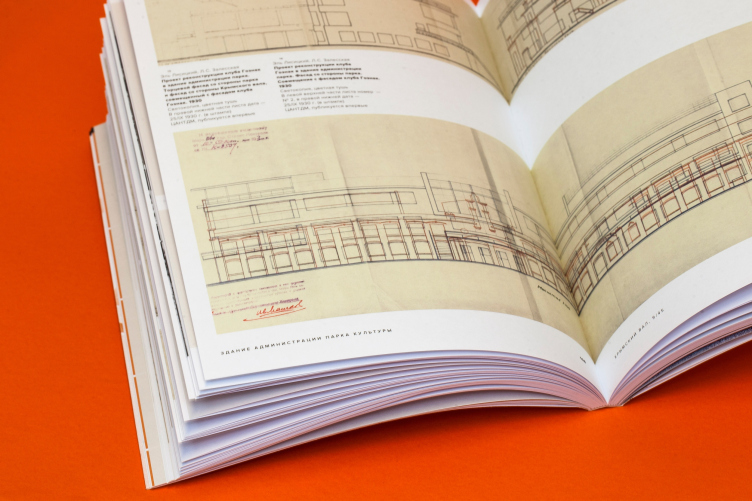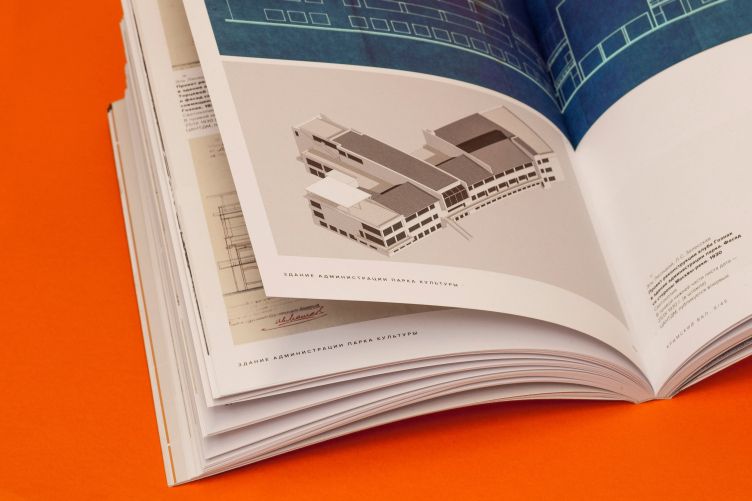The building standing at the edge of Gorky Park next to the Krymsky Bridge, to the right of the main entrance to the park (or to the left of the minor entrance on the embankment side) does not attract any particular attention; at some moment, when the reconstruction of the park had only just begun, they even planned to tear it down altogether to make room for expanding the Garden Ring. Meanwhile, after the building was turned into the headquarters of the museum of modern art “Garage”, which moved in here from the Bakhmetyevsky Garage, the museum, in turn, invited FORM to develop the reconstruction project, and they started doing a research of the building, it turned out that it was a sophisticated multilayered structure with approximately nine periods of development. The building appeared in the end of XIX century as a part of the Bromley dockyard, was later on remodeled to become a pavilion of the All-Union agricultural exhibition, then served as the GOZNAK convention center, then one of the first sound movie theaters, then a public bathhouse, and then a sanitary ware store.
Krymsky Val 9/45. The Unknown Monument of Gorky Park. Moscow, 2018 © ABCdesign
Historical transformations of the building. The "Garage" headquarters in Gorky Park © FORM
With the support from the museum, the architects not only turned some of the building into an office of “Garage” but also thoroughly researched it – their work was shown a year and a half ago at Arch Moscow 2017. Parallel to doing the research and design, they were writing a book fully dedicated to the building standing at Krymsky Val, 9/45. Below we are publishing one of the chapters of this book written by the architects of FORM, historians Marianna Evstratova and Sergey Koluzakov, ABCdesign publishers, Kuchkovo Pole publishers, and the team of the museum of modern art “Garage”. More about the book (in Russian).
Krymsky Val 9/45. The Unknown Monument of Gorky Park. Moscow, 2018 © ABCdesign
Krymsky Val 9/45. The Unknown Monument of Gorky Park. Moscow, 2018
Olga Treivas, Vera Odyn, Polina Patimova, Polina Litvinenko, Alina Yaroshenko, Kristina Timchuk, Idris Suliman, Svetlana Dudina, Konstantin Kim, Mikhail Mikadze.
Chapter 7. The Park Management. Office of the Museum of Modern Art “Garage”. Architectural firm FORM.
“In 2011, Sergey Kapkov was appointed the Director of Gorky Park. From that moment on, the park underwent profound changes that caused heated controversy. Within the first half a year, all the outlaw structures were removed, and almost all of the amusement rides were dismantled – this caused a negative reaction from the visitors and the owners of the park cafés alike but the changes were still enforced.
During the same period of time, Sergey Kapkov was speaking about demolishing the office wing next to the Krymsky Bridge. It was proposed to make a road junction there and solve the problem of traffic jams inevitably forming near Gorky Park, but seeing how unpromising the whole idea was, they soon gave up on it altogether.
In 2012, the Museum of Contemporary Art “Garage” was preparing to moving to Gorky Park and needed a place for its headquarters. The management of Gorky Park offered the museum to be headquartered in the left half of the building next to the Krymsky Bridge – the one that hitherto hosted the sanitary ware store. As the architects of this project, The director of “Garage” invited FORM as the architects of this project.
The "Garage" headquarters in Gorky Park. FORM. Photograph © Yuri Palmin
The "Garage" headquarters in Gorky Park. FORM. Photograph © Yuri Palmin
Krymsky Val 9/45. The Unknown Monument of Gorky Park. Moscow, 2018 © ABCdesign
The first acquaintance with the building, and especially with its interior, was not particularly inspiring: clapboard walls, mosaic panel pictures, and even a jacuzzi bowl that was inherited from the sanitary ware store. The whole place was cluttered with tiny rooms, one of the staircases being completely blocked for yielding more office space. It was hard to imagine that all this mess actually concealed a surprisingly spacious house full of sunlight. However, after the architects studied the Bureau of Technical Inventory documents, it became obvious to them that the building had a clear-cut and interesting structure that is hard to discern behind the renovations of the 1980‒2000’s.
In spite of the fact that from the outside the management building looks rather coherent, for more than half a century it has been existing as two separate volumes with a ruin of the movie theater in the middle. The ruin can only be seen from the inside of the building – it is separated from the city by two blind façades. The reinforced concrete pillars and beams of the movie theater that survived a Nazi bombing, are exposed to the blue sky up to this day. Upon the initiative of “Garage”, the trees, which appeared inside the ruin over the fifty years, were made sparser but were still preserved.
The "Garage" headquarters in Gorky Park. The ruin of the movie theater in the middle of the building. Photograph © Yuri Palmin
The "Garage" headquarters in Gorky Park. The ruin of the movie theater in the middle of the building. Photograph © Yuri Palmin
The "Garage" headquarters in Gorky Park. The ruin of the movie theater in the middle of the building. Photograph © Yuri Palmin
The "Garage" headquarters in Gorky Park. The ruin of the movie theater in the middle of the building. Photograph © Yuri Palmin
Working with the building, the FORM architects decided to bring out the best in it by clearing it from whatever later additions were there, and adjust the floor plan of the movie theater for the museum headquarters, exposing the historical brickwork.
The technical audit showed that the bearing structures were significantly damaged, and the brick columns inside the building and some of the apertures were reinforced by metal staples. The roof of the building was assembled anew: the original wooden beams were not single-cut, they consisted of pieces of wood of different sizes, and were deformed; in addition, one of the beams got badly burned during the bombing in the Second World War. The new beams, the shape of which is identical to that of the original ones, are made of glued timber. The new heat-retaining roof made it possible to use the space directly underneath it as an extra story: the two new lofts are connected to the other space with two new staircases, a straight and a spiral one. During the work, two blocked windows were restored on the façade that overlooks the park, and a few small windows of the bull’s eye type.
The "Garage" headquarters in Gorky Park. FORM. Photograph © Yuri Palmin
The "Garage" headquarters in Gorky Park. FORM. Photograph © Yuri Palmin
The "Garage" headquarters in Gorky Park. FORM. Photograph © Yuri Palmin
The four floors of the headquarters are plainly visible: several working spaces are situated at different levels.
With the coming of “Garage” museum, the building aroused a lot of public interest. This is the place that guests of honor are invited to, and a place, to which creative people from all over the world come, including many famous artists and architects.
Krymsky Val 9/45. The Unknown Monument of Gorky Park. Moscow, 2018 © ABCdesign
Krymsky Val 9/45. The Unknown Monument of Gorky Park. Moscow, 2018 © ABCdesign
The fate of the ruin is a story that is yet to be continued. Possibly, the destroyed fragment of the building will take on a new independent function or it will be annexed by one of the functioning parts. Several Moscow-based architectural firms proposed their concepts trying to make out just what you can turn this ruin into but so far none of them has been implemented.
The serious research done by the authors of this book allows the architects to continue their work using the extensive knowledge about the historical context and the place that this unique building occupies in it”.
